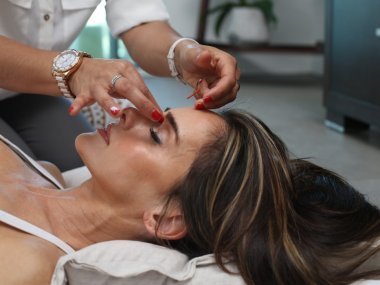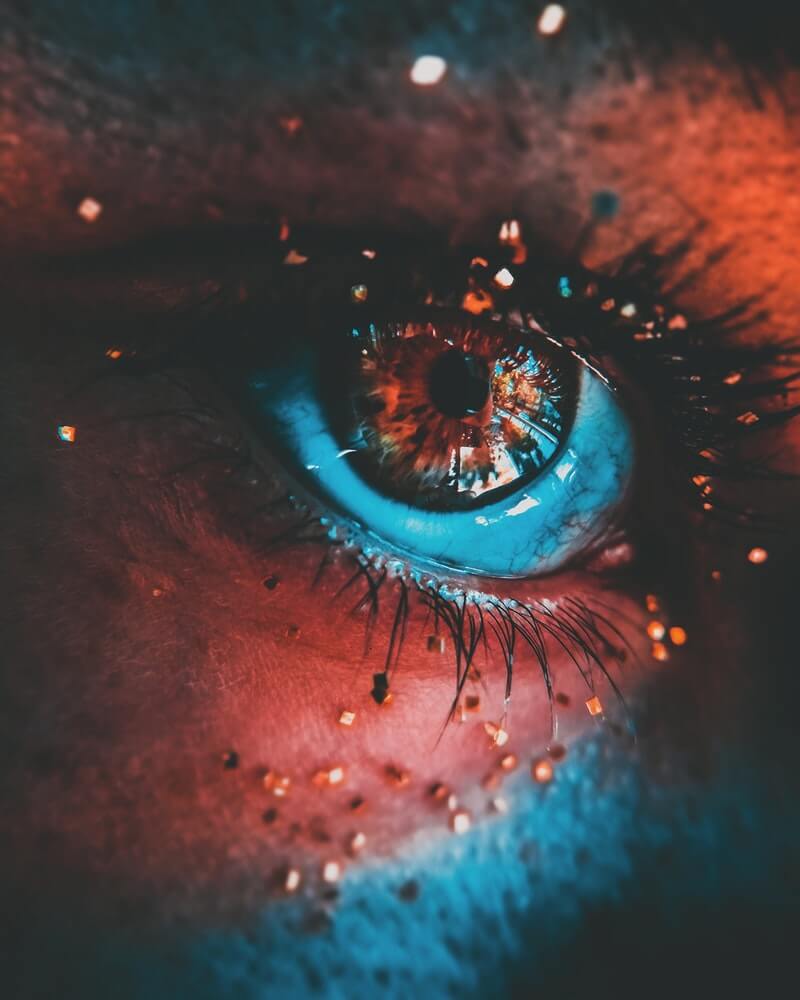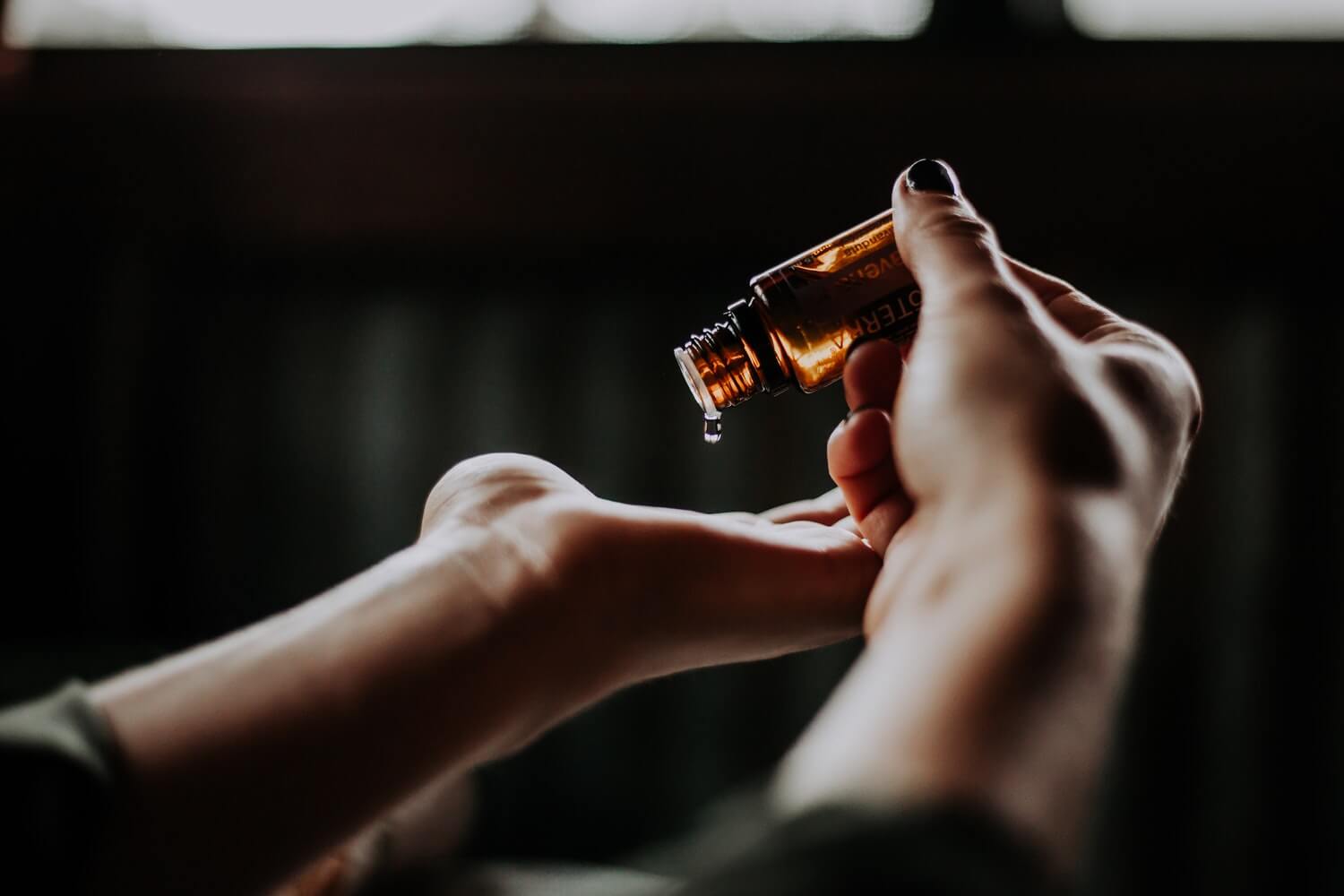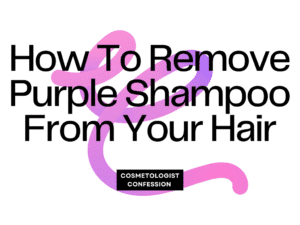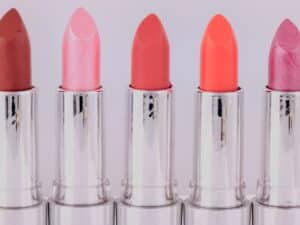Various factors are the culprit as to why you get dark under-eye circles and bags. The cause of under-eye circles can be due to a few different reasons; some you can control, and others you can’t.
But first, let’s quickly go over what causes under-eye circles and bags.
Contents
What Causes Dark Under-Eye Circles And Bags?
Genetics
Some people are more prone to dark circles due to their genetics. Dark circles can run in families and can be caused by inherited traits such as thin skin under the eyes, making the blood vessels more visible.
When you have dark under-eyes due to genetics, you might have had them your whole life. It may be why people throughout your life have told you that you look tired or even asked if you feel sick.
Lack Of Sleep
This one may be the number one culprit people associate with dark circles under the eyes. Not getting enough sleep can cause dark circles under the eyes. When you don’t get enough sleep, your skin may appear pale, making the blood vessels under your eyes more visible.
When you lack deep sleep, your blood vessels dilate, thus causing an increase in blood flow. Since the skin under your eyes is thinner, the dark color caused by the increased blood volume is more noticeable.
Allergies
Allergies can cause inflammation, dilating the blood vessels under the eyes. This can cause dark circles and puffiness around the eyes.
Going hand in hand with your genetics, you can also have hereditary allergies that cause inflammation. This means that one of your parents has dark under-eye circles, and your may notice your siblings deal with them as well.
Aging
The skin under our eyes can become thinner as we age, making the blood vessels underneath more visible.
While you clearly can’t stop getting older, you can help diminish the signs of aging (the exact ways we will go over below).
Dehydration
Dehydration can cause the skin to appear dull and dry, which can make dark circles appear more prominent.
Now let’s get into how to help eliminate and diminish the appearance of dark under-eye circles!
Get Enough Sleep
Getting enough sleep can help to prevent under-eye circles for a few reasons:
Reduces Puffiness
When you don’t get enough sleep, your skin may appear pale, making the blood vessels under your eyes more visible. This can cause puffiness around the eyes, making dark circles appear more prominent. Adequate sleep can help to reduce puffiness around the eyes.
The Centers for Disease Control and Prevention (CDC) considers less than seven hours per night short sleep.
Increases Blood Flow
Adequate sleep can help to increase blood flow to the skin, which can help to reduce the appearance of dark circles.
Helps Skin Repair
During sleep, your body produces collagen, a protein that helps repair and rejuvenate the skin. Collagen production can help improve the appearance of the skin under the eyes, making dark circles less visible.
Improves circulation: Adequate sleep can help to improve blood circulation, which can help to reduce the appearance of dark circles. Good blood flow can help reduce the accumulation of blood in the vessels under the eyes, reducing the appearance of dark circles.
Reduces stress: Lack of sleep can cause stress which can lead to inflammation and dilated blood vessels in the under-eye area, leading to dark circles. Adequate sleep can help to reduce stress and inflammation, which can help to reduce the appearance of dark circles.
It’s important to note that getting adequate sleep is just one aspect of a healthy lifestyle, and it should be combined with other measures such as eating a healthy diet, staying hydrated, and reducing stress. Also, it’s important to remember that underlying medical conditions can cause under-eye circles. Hence, it’s best to consult a healthcare professional if you have persistent under-eye circles, especially if other symptoms accompany them.
Monitor Your Sodium Intake
Sodium is one of the culprits that retain water in your body, contributing to deep puffy bags under your eyes.
Limiting your sodium intake will help reduce the appearance of bags.
You can also try to eat most of your sodium in the front of your day and limit the amount you use around dinner to help you wake up looking fresh in the morning.
It is best to avoid processed or packaged foods as these will be big salt bombs.
Make sure you drink enough water throughout the day to flush out the sodium in your diet. Avoiding excess liquid at night will also help your body not retain the water under your eyes while you sleep.
Eating foods containing potassium can help cut sodium levels.
Foods high in potassium include
- bananas
- yogurt
- potatoes
- dried apricots
Home Spa Remedies
While home remedies may not completely eliminate under-eye circles, they can help reduce their appearance and provide some relief. Here are some home spa remedies you can try:
Cucumber slices: Place chilled cucumber slices on your closed eyelids and relax for 10-15 minutes. Cucumbers have a cooling effect and can help reduce puffiness and soothe the under-eye area.
Cold compress: Apply a cold compress, such as a chilled spoon or a cold washcloth, to your under-eye area for a few minutes. The cold temperature can help constrict blood vessels and reduce swelling.
You can also use a cold compress in the form of eye masks. I use these gold eye masks daily, and they are a game changer. After the eye patches, I follow up with my ice roller. I keep both in the fridge because the coldness helps depuff.
| IMAGE | PRODUCT | DETAILS | |
|---|---|---|---|
Cult Following |
Gold Eye Mask |
|
|
Used by celebrities  |
Hot Mess Ice Roller |
|
Tea bags: Steep two chamomile or green tea bags in hot water for a few minutes, then let them cool down. Place the cooled tea bags over your eyes for 10-15 minutes. The antioxidants and tannins in the tea can help reduce inflammation and discoloration.
Aloe vera gel: Apply a small amount of pure aloe vera gel to the under-eye area and gently massage it in. Aloe vera has soothing and hydrating properties that can help nourish the skin and reduce puffiness.
Almond oil: Massage a few drops of almond oil under your eyes before going to bed. Almond oil contains vitamin E, which can help moisturize the skin and reduce dark circles over time.
Potato slices: Cut chilled potato slices and place them on your eyes for 10-15 minutes. Potatoes contain enzymes and natural bleaching agents that can help lighten dark circles and reduce puffiness.
Rose water: Soak cotton pads in chilled rose water and place them on your closed eyelids for 10-15 minutes. Rose water has a calming effect and can help reduce puffiness and rejuvenate the skin.
Hydration
Hydration plays a crucial role in maintaining healthy skin and can help reduce the appearance of under-eye circles. When the skin is dehydrated, it can become dull, dry, and more prone to dark circles. Here are some tips to improve hydration and minimize under-eye circles:
Drink plenty of water: Ensure you drink adequate water throughout the day to stay hydrated. The general recommendation is to consume at least 8 cups (64 ounces) of water daily. However, individual water needs may vary based on factors like activity level and climate.
If you aren’t the best at drinking water, try to sneak in snacks that are high in water content, like cucumbers and watermelon.
Use A Humidifier
Use a humidifier: If you live in a dry climate or spend significant time in air-conditioned environments, consider using a humidifier to add moisture to the air. This can help prevent your skin from becoming excessively dry and aid in hydration.
The use of a humidifier can create a more comfortable environment by increasing the humidity levels in a room, which can potentially benefit the skin’s overall hydration.
While a humidifier can contribute to overall skin health, it is not a stand-alone solution for under-eye circles. It is always best to adopt a comprehensive approach incorporating multiple strategies to address under-eye circles effectively.
Protect From Sun Exposure
The skin around the eyes is delicate and more prone to damage from the sun’s ultraviolet (UV) rays. Here’s why it’s important to protect the under-eye area from the sun:
- Prevention of premature aging: The skin around the eyes is thin and lacks a significant amount of oil glands, collagen, and elastin fibers. This makes it more susceptible to photoaging caused by UV radiation. Over time, sun exposure can lead to the breakdown of collagen and elastin, forming fine lines, wrinkles, and sagging skin.
- Minimization of dark circles and discoloration: Prolonged sun exposure can exacerbate hyperpigmentation and the appearance of dark circles under the eyes. The melanin-producing cells in the skin can become more active when exposed to UV rays, leading to uneven skin tone and darkening of the under-eye area.
- Reduction of puffiness: Sun exposure can cause inflammation and fluid retention, leading to under-eye puffiness or bags. Protecting the skin from the sun helps minimize these effects and keeps the under-eye area looking more refreshed.
To protect your under-eye area from the sun, follow these recommendations:
- Wear sunscreen: Apply a broad-spectrum sunscreen with at least SPF 30 to the under-eye area daily, even on cloudy days. Choose a gentle, fragrance-free sunscreen specifically formulated for sensitive skin around the eyes.
- Wear sunglasses: Invest in sunglasses that provide 100% UV protection. Look for large frames that cover a wide area around the eyes to shield the under-eye area from direct sunlight.
- Use hats or visors: When spending extended periods outdoors, wear hats or visors to provide additional shade and protection for the under-eye area.
- Seek shade: Stay in shaded areas or use umbrellas to minimize direct sun exposure, especially during peak sunlight hours (typically 10 a.m. to 4 p.m.).
By taking these precautions, you can help protect the delicate skin around your eyes from sun damage and maintain healthier-looking under-eye skin.
Consider Professional Treatments
There are several professional treatments available that can help address under-eye circles. It’s important to consult with a dermatologist or aesthetic professional to determine the most suitable option for your specific needs. Here are some common professional treatments for under-eye circles:
- Chemical peels: Chemical peels involve the application of a chemical solution to the under-eye area, which exfoliates the top layers of the skin. This treatment can help improve the appearance of dark circles by reducing pigmentation and promoting skin cell turnover.
- Laser therapy: Laser treatments such as intense pulsed light (IPL) or fractional laser resurfacing can be used to target under-eye circles. These procedures stimulate collagen production, reduce pigmentation, and improve skin texture and tone.
- Dermal fillers: Hyaluronic acid-based dermal fillers can be injected into the under-eye area to fill in hollows and minimize the appearance of shadows caused by volume loss. This treatment can help smooth the under-eye area and reduce the appearance of dark circles.
- Platelet-rich plasma (PRP) therapy: PRP therapy involves drawing a small amount of your blood, processing it to isolate platelet-rich plasma, and then injecting it into the under-eye area. PRP contains growth factors that can stimulate collagen production and improve skin texture and tone.
- Microneedling: Microneedling is a procedure that uses tiny needles to create controlled micro-injuries in the skin. This stimulates collagen production and improves the overall texture and appearance of the under-eye area, including reducing the appearance of dark circles.
- Chemical depigmentation: In some cases, when under-eye circles are caused by excessive pigmentation or melasma, chemical depigmentation agents can be used under the guidance of a dermatologist to lighten the affected area.
It’s important to note that the suitability and effectiveness of these treatments can vary depending on factors such as the underlying cause of your under-eye circles, your skin type, and your individual response. Your healthcare professional will assess your condition and recommend the most appropriate treatment option for you. They will also provide information on potential risks, recovery time, and expected outcomes associated with each treatment.


